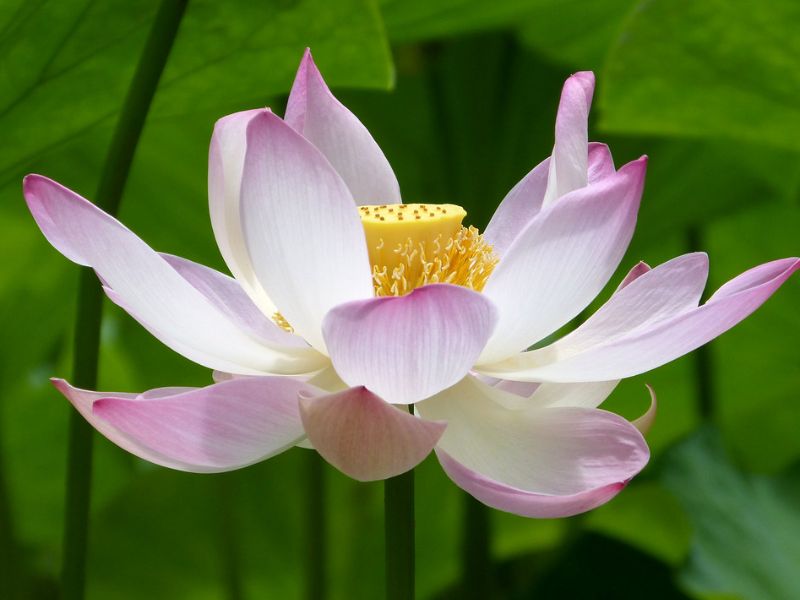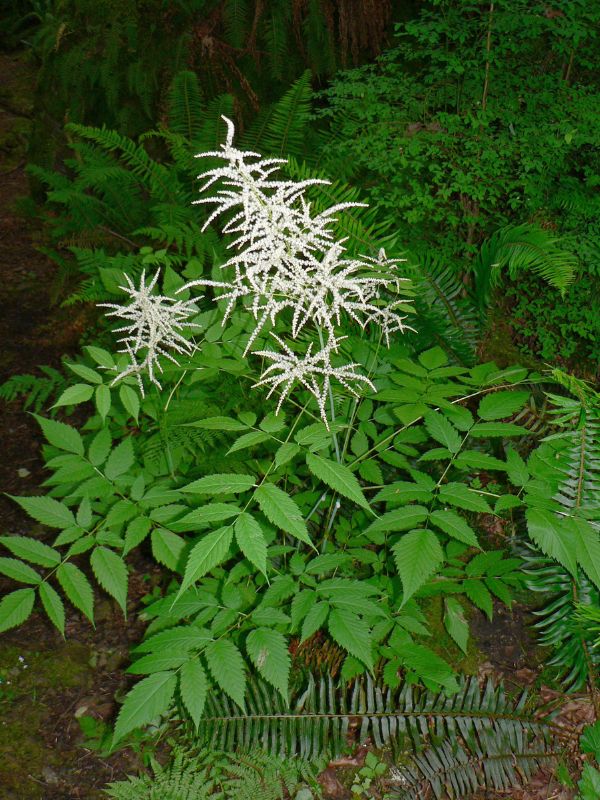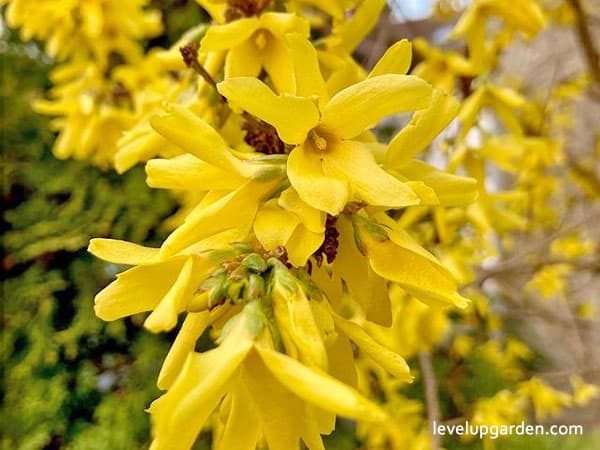Papaya (Carica papaya) is a herbaceous perennial plant of the Sericeae family grown for its edible fruit. They are tree-like, usually unbranched, with hollow stems and petioles. The leaves are palmately lobed, arranged in spirals, and clustered at the tip of the trunk.
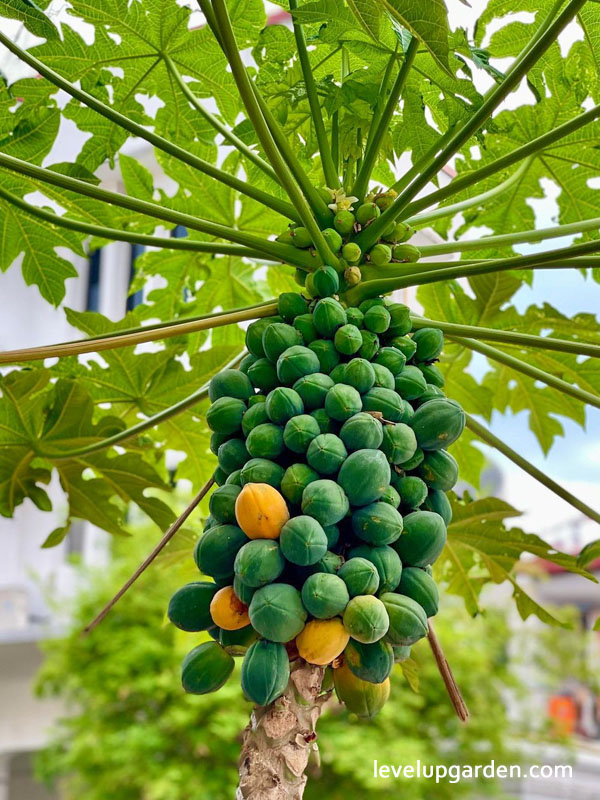
Papaya trees are male, female, or hermaphroditic, and the type of inflorescence reflects this. Male trees have numerous flowers on long hypocotyls, while female trees have either a single flower or a few yellow-green flowers in clusters. Hermaphroditic trees have bisexual flowers.
The origin of the papaya is unknown, but it is thought to be a fusion of two or more species of carica plants native to Mexico and Central America. It is a large, short-lived perennial herb with a single, large trunk, reaching up to 9 meters at maturity. The palmate leaves are deeply lobed and can be over 1 m wide.
I. Plant Profile – An Overview of the plant
| Common names | Papaya, pawpaw (English and Spanish), malakor, loko, ma kuai thet (Thai), and du du (Vietnamese), Okwuru-ezi, Okwuru- bekee, Mgbimgbi, Ibepe |
| Botanical name | Carica papaya L. |
| Family | Caricaceae |
| Type | Broadleaf evergreen |
| Native Range | South America |
| Light | Full sun |
| Soil | Fertile, well-draining |
| Fertilizer | Full-spectrum, balanced every 4 weeks |
| Zone | 10 to 12 |
| Height | 6.00 to 20.00 feet |
| Spread | 3.00 to 15.00 feet |
| Bloom Time | Seasonal bloomer |
| Water | Medium |
| Maintenance | Medium |
II. Appearance
Leaves are deeply lobed and sometimes attached to a 60 cm long, hollow petiole. Usually dioecious, with male and female flowers on separate plants, but dioecious plants are also known, and the distribution of male and female flowers is often irregular. Male flowers are in clusters on 90-cm-long stems, funnel-shaped, about 2.5 mm long, whitish, with 10 stamens at the throat.
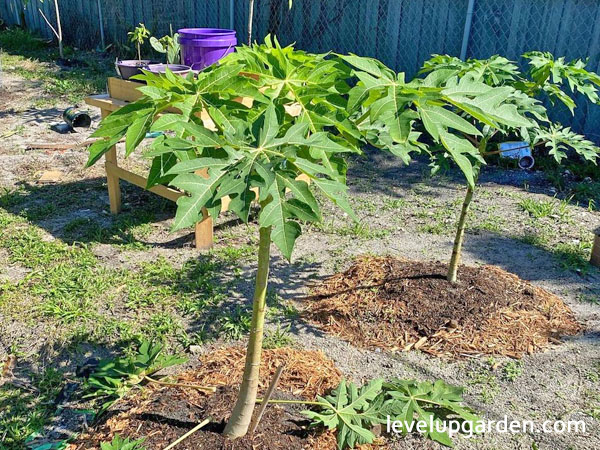
However, female flowers are much larger, on very short stems, often solitary in leaf axils, with five fleshy petals. These petals are united toward the base and a large cylindrical or globose upper ovary crowned by five fan-shaped, sessile stems. They are very easy to distinguish.
The leaves are large, 50-70 cm in diameter, deeply palmately lobed, with seven lobes, with a life span of 6-8 months. They are produced each week during warm and hot weather, but new leaf development is suppressed or ceases during cool and cold weather. All parts of the plant contain a substance resembling a milky juice in the articulated laminae.
Moreover, papayas are actually dioecious. The flowers are 5-lobed, and the male flowers are highly dimorphic with the stamens fused to the petals. Female flowers have an upper ovary and five distorted petals loosely connected at the base. Pollen grains are elongated, about 35 microns long.
Inflorescences are slender (25-100 cm long) and branched in male plants and much reduced and spherical in bisexual and female plants. Papayas are monogamous and have three basic plant types. They can be differentiated through their appearance.
Male plants bear small tubular yellow flowers with 10 anthers, clustered at the tips of long flower stalks. Female (dioecious) plants have large yellow to whitish flowers in leaf axils along the stem with large, shrunken ovules. Dioecious (dioecious) plants have complete flowers on much-reduced corms in leaf axils along the trunk.
Fruits are generally spherical to cylindrical, 75-500 mm long or longer, and can weigh 9-11.5 kg. The flesh is dark yellow, orange or salmon in color and very juicy. Along the walls of the large central cavity are numerous round, wrinkled, black seeds. They are also large, approximately 15-45 cm long and 10-30 cm in diameter.
Moreover, they are soft and ripe with amber to orange skin and numerous black seeds adhering along the walls of the large central cavity. Papaya fruits are large fleshy berries with smooth green skin that ripens to yellow or orange. The flesh is thick and juicy, and the color ranges from yellow to red or orange. The fruit contains many black wrinkled seeds. Papaya trees are 2-10 m tall and can live up to 25 years.
III. Growing and Care Conditions
Papaya trees are susceptible to frost. It is best grown in tropical or semi-tropical climates, in full sun, on humusy, constantly moist but well-drained organic loams. It produces its best fruit in sunny locations. If grown as an ornamental, not for fruit, it can be grown in light shade. For container planting, the plant needs to be replanted every 4-5 years. Papayas are good feeders and need to be fertilized regularly.
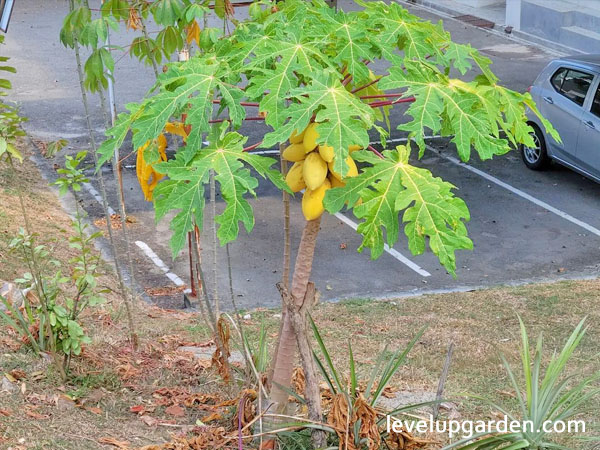
Growing a papaya tree allows you to enjoy exotic fruits every year. Papaya trees grow best in USDA growing zones 9 and 10. If you are lucky enough to live in these areas, learning how to grow papaya trees should probably come naturally.
Planting
When planting a papaya tree, place it in a location with good soil, with plenty of sun and water. Papayas grow best in rich soil with high organic matter content. It grows in subtropical and tropical climates. It is easy to grow, but temperatures should not fall below 32°F (32°C). Ensure good drainage of the planting site and soil to prevent root rot.
Plant papaya seedlings in a sunny location, away from power lines and other trees.
Amend clay soil with peat moss or other organic matter to improve drainage. But, do not amend soil with compost and do not fertilize.
To plant Papaya, dig a hole three times the size of the plant container and fill it with amended soil. Then, backfill the hole until there is a space slightly larger than the container. Then, place the rootball in the hole.
Fill the rest of the hole with soil, step down, and water the tree deeply. Soak the soil at least 8 inches down; wait 30 minutes, then dig down with a trowel; if it is not wet more than 8 inches, either you did not water it enough or you watered it too soon and the water has run elsewhere. It is better to let the seedlings soak in water slowly for an hour or two than to let a puddle of water form around them and leave them there.
Growing papayas from seed is the easiest and most successful method. Of course, it is also the least expensive. You can grow papayas from store-bought papaya seeds. However, papayas are fussy plants. It is not always easy to make them last and produce good fruit.
Light
It is best to grow Papaya in 6-8 hours of sunlight or in as bright a spot as possible. Rotate the plant occasionally so that it grows upright in the pot without tilting. Papaya is a good sunny patio plant for summer climates.
Watering
The most important part of growing papaya is watering. Papaya seedlings should be watered mainly at the base of the plant. Papayas need plenty of water to produce tasty fruit, but they do not like to have their feet wet (saturated soil).
To avoid overwatering papayas, water deeply after the top 1 inch of soil is dry. If the soil is not wet 8 inches below the surface, you will need to water more. In winter, the plant prefers to be as dry as possible. Frost-damaged plants are especially prone to root rot. In summer, as long as it drains well, you can water it as much as you like.
Fertilizer
Papayas need regular monthly nitrogen fertilization. A hot organic fertilizer such as aged chicken manure can be used as long as it is irrigated deeply after the weather warms up. Phosphorus deficiency will result in dark green leaves with reddish purple discoloration of the veins and stems.
Soil Requirements
Papaya cultivation requires fertile soil with high organic matter content. Well-drained soil is also necessary, while saturated soil is conducive to disease development. When planting papaya seeds, dig a hole about 1.5 feet deep and fill it with a good mix of organic soil and well-rotted compost.
Purchase these soils from a reputable nursery. Clay soil should be well amended. In tropical regions, native soil is the only way to go. If the soil is not suitable, amendments of the soil can be effective. The optimal pH range for growing papaya trees is 5.5 to 5.9. In areas that get very hot in the summer, wood chips should be placed at the base of the tree to trap moisture.
Temperature
Papaya plants require a fairly warm environment, up to 80 degrees Fahrenheit. If you keep the plant in the winter, try to keep the temperature as warm as possible and the ambient humidity as high as possible. This plant cannot be placed near a window with poor ventilation.
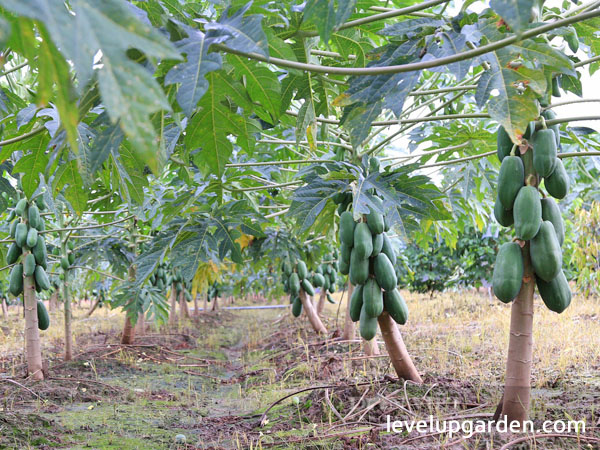
In warmer climates, potted papaya plants may be grown on patios. However, they do not respond well to temperatures below 65 degrees Fahrenheit. Just make sure it gets enough warmth and ventilation.
Pruning
It is best not to prune papayas unless there is a very significant structural problem with the papaya. Most papayas grow from the main trunk and have no significant branches to remove. In winter, Papayas do not lose its green leaves.
Harvesting
The fruit is a type of berry which is fully ripe when it is about the same size as a ripe avocado or a little softer and the rind is amber to orange in color. Generally, the fruit is picked when the color of the berry has changed from 1/5 to 1/3 of its original color. After harvesting, the fruit is stored at room temperature to allow it to fully ripen. Fully ripe fruit can be stored in the refrigerator for 4 to 7 days.
Papaya fruit trees are ready for harvest approximately 4-5 months after flowering. If you are growing male and female plants, you will likely harvest papayas from the female tree. Bisexual plants produce papayas on their own.
There are two ways to harvest papaya fruit. One is to harvest when the fruit is fully ripe and orange, and the other is to harvest the developing fruit while it is still green. Fruit trees will produce papayas even if left alone, so wait until the ripe papayas are slightly soft to the touch and remove them by hand. Use a ladder if necessary.
Pests and Diseases
Papaya pests include mites, beetles, and fruit flies. Preventive measures should be taken, such as using insecticides and removing damaged or old leaves and fruit. It is also a good idea to avoid leaving ripe fruit for long periods of time.
Charcoal blight, crown rot, root rot, and ringspot virus are diseases that can harm papayas. Proper management is important to prevent these diseases. Avoid excessive rain and water exposure. Remove and dispose of diseased leaves, fruit and whole plants. Fungicides are also effective.
Pollination
Male flowers on a papaya tree can pollinate female flowers on the same tree, so there is no need to have another tree for pollination. However, the papaya tree will produce more fruit if there is another tree nearby. Insects and wind patterns move pollen between different papaya flowers.
IV. Uses
Papaya fruit is somewhat sweet with a pleasant musky acidity, more pronounced in some varieties and climates. They are used in salads, pies, sorbets, juices, and sweets. It can also be used to feed chickens and attract many wild birds to the garden.
The unripe green fruits are often eaten cooked because they contain latex. The ripe fruits of papayas are usually eaten raw, without skin or seeds. The black seeds of papaya are edible and have a sharp, spicy flavor. In Vietnam and Thailand, they are commonly eaten raw, although raw fruits can be ripened by exposing them to sunlight. Young leaves, flowers, and stems can be cooked by boiling in varying amounts of water.
V. Why should you buy this plant
The Papaya Tree can yield 60-80 pounds of fruit in one season. You can expect this papaya to produce fruit in its first year, then your tree will then grow to a manageable size. While other trees are growing taller, your tree is bearing fruit. You don’t have to worry about climbing a ladder to harvest these papayas.
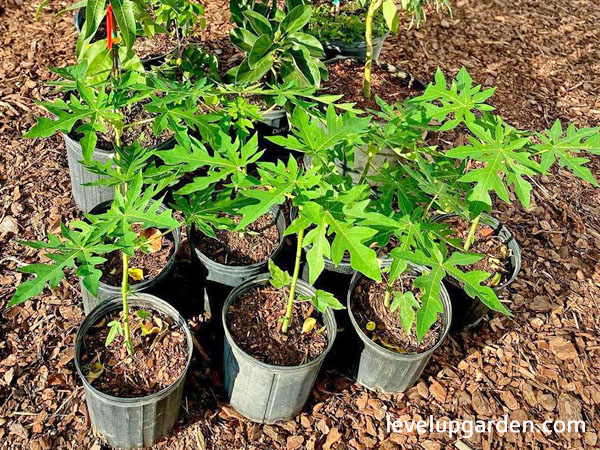
The papaya tree can be grown anywhere in the country. In zones 9 to 11, it can be planted in the ground, but the tree must be protected from freezing temperatures. In colder areas, simply plant them in containers and keep them indoors for the winter. Fresh papayas can be harvested and made into juice.
This variety is characterized by its excellent taste, aroma, and texture. The peppery-flavored seeds are also edible. Papayas are delicious eaten as is, but can also be made into drinks, jellies, pastes, desserts, dried, or candied.
The papaya tree is ideal for organic cultivation. It is resistant to disease and pests and It likes to be dried between waterings, so avoid humid areas. This variety has a thick skin, which protects it from insects and keeps the fruit fresher longer. It is self-pollinating, therefore, it bears fruit all on one tree. However, it can be crossed with other papaya trees to produce more fruit.
Its fragrant white or cream-colored flowers attract bees, birds, and butterflies. It contains calcium, iron, protein, and vitamins A, B, C, and G. Furthermore, papaya is not a tree with a solid trunk, but a plant with a hollow stem.
VI. FAQs
How long does it take a papaya tree to grow?
To grow papaya successfully, you need a frost-free climate, lots of sunlight, plenty of water, and good soil. If all of these conditions are met, papaya trees can be grown from seed and usually bear fruit in 6 to 12 months.
Do you need 2 papaya trees to get fruit?
Yes, for pollination. The male flowers on the papaya tree can pollinate the female flowers on the same tree, so there is no need to have another tree for pollination.
What is the lifespan of a papaya tree?
Under the right conditions, a papaya tree can live nearly 20 years. Papaya trees grow best in USDA Hardiness Zones 9-12. This is because papayas need a tropical climate to grow and fruit successfully. A papaya tree can last for several years if the right conditions are met.
How many papayas can you get from one tree?
A mature papaya tree can produce as many as 100 fruits per season. Mature papaya trees naturally flower in early spring and produce mature fruit in the summer and fall.
How often do you water papaya trees?
For plants that grow in loamy soil, watering once every 3-4 days is sufficient, but if your papaya tree grows in well-drained soil, it will need to be watered every other day, or daily when it is hot and dry.
